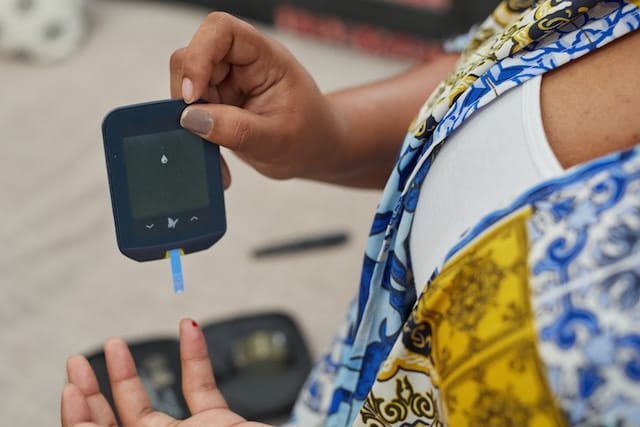Different Diabetes Treatments
Diabetes is a lifelong disease that causes high blood sugar levels. There are many different treatments for diabetes, and what works for one person may not work for another. If you or someone you know has diabetes, it’s important to stay up-to-date on the latest treatments. Diabetes treatments have come a long way in recent years, and several different treatments are now available. Medications, insulin injections, and pump therapy. We’ll also explore the benefits and drawbacks of each treatment option. So whether you’re newly diagnosed with diabetes or just looking for information on current treatments, read on!
There Are Some Treatments To Manage And Cure Your Diabetes
Medications Used To Treat Diabetes
There are many different types of medication used to treat diabetes. Some common diabetes medications include:
– Metformin: This is an oral medication that helps to control blood sugar levels. It is often the first medication prescribed for type 2 diabetes.
– Sulfonylureas: These are oral medications that help to stimulate the pancreas to produce more insulin.
– Meglitinides are oral medications that work similarly to sulfonylureas by stimulating the pancreas to produce more insulin.
– Thiazolidinediones (TZDs): These oral medications help improve insulin sensitivity.
– DPP-4 inhibitors: These are oral medications that help to prevent the breakdown of a hormone called GLP-1. This hormone helps to regulate blood sugar levels.
– Alpha-glucosidase inhibitors are oral medications that help slow down the absorption of carbohydrates from the gut.
– Insulin is a hormone that helps regulate blood sugar levels. It is often prescribed for people with type 1 diabetes or type two diabetes that is not well controlled with other medications.
Injectable Insulin
In addition to oral medications, insulin can be taken as an injection. Insulin injections are typically given one to four times per day, depending on the type of insulin used. There are many different types of insulin, each with different duration of action.
Common types of insulin include:
– Rapid-acting insulin: This type of insulin begins to work within 15 minutes after injection and peaks in 30-60 minutes. It is typically used before meals to help control blood sugar levels after eating.
– Short-acting insulin: This type of insulin begins to work within 30 minutes after injection and peaks in 2-4 hours. It is typically used before meals to help control blood sugar levels after eating.
– Intermediate-acting insulin: This type of insulin begins to work within 2-4 hours after injection and peaks in 4-12 hours. It is typically used once or twice daily to help control blood sugar levels throughout the day.
– Long-acting insulin: This type of insulin begins to work within 6-14 hours after injection and does not have a peak effect. It is typically used once or twice daily to help control blood sugar levels throughout the day.
Insulin Pump Therapy
Insulin pump therapy is a treatment that delivers insulin through a small pump worn outside the body. Furthermore, insulin pump therapy can be used to treat both type 1 diabetes and type 2 diabetes. The pump is typically worn around the waist, and the tubing from the pump is threaded under the clothes so that it is not visible. Insulin pump therapy can be used to deliver both rapid-acting and long-acting insulin.
Benefits Of Insulin Pump Therapy
There are many benefits of insulin pump therapy, including:
– More flexibility in meal planning: With insulin pump therapy, you can decide when and what to eat without having to worry about when you will need to take your insulin.
– More predictable blood sugar control: Insulin pump therapy can help to provide more predictable blood sugar control than injections of insulin.
– Reduced risk of low blood sugar: Insulin pump therapy can help to reduce the risk of low blood sugar (hypoglycemia) because the pump can be programmed to deliver small amounts of insulin throughout the day.
– Fewer injections: With insulin pump therapy, you will need fewer injections than other types of insulin therapy.
Drawbacks Of Insulin Pump Therapy
There are also some drawbacks of insulin pump therapy, including:
– Cost: Insulin pump therapy can be expensive, and not all insurance plans will cover the cost of the pump.
– Risk of infection: There is a small risk of disease at the site where the pump is inserted under the skin.
– Discomfort: Some people find that wearing the pump can be uncomfortable.
– Requires frequent blood sugar monitoring: Insulin pump therapy requires frequent blood sugar monitoring and regular checks of the pump site.
Whether or not insulin pump therapy is right for you will depend on your individual needs and preferences. Your doctor can help you decide if insulin pump therapy is a good option.
No matter what type of diabetes treatment you choose, it’s essential to work with your healthcare team to create a treatment plan that is right for you. You can manage your diabetes and live a healthy life with the right treatment plan.
Diet and exercise
Diet and exercise are essential parts of any diabetes treatment plan. Furthermore, eating a healthy diet and regular exercise can help you control your blood sugar levels, lose weight, and reduce your risk of complications. Talk to your doctor or registered dietitian about what diet is right for you.
If you have diabetes, you must see your healthcare team regularly. Your healthcare team can help you manage your diabetes, prevent complications, and answer any questions you may have.
Weight loss surgery
Weight loss surgery also called bariatric surgery, is an option for people who are obese and have type 2 diabetes. The surgery can also help to improve blood sugar control and may even lead to remission of type 2 diabetes.
Benefits Of Weight Loss Surgery
There are many benefits of weight loss surgery, including:
– Improved blood sugar control: Weight loss surgery can improve blood sugar control in people with type 2 diabetes.
– Reduced need for medication: People who have weight loss surgery may be able to reduce or eliminate their need for diabetes medication.
– Weight loss: Weight loss surgery can help people lose a significant amount of weight, improving overall health.
Drawbacks Of Weight Loss Surgery
There are also some drawbacks of weight loss surgery, including:
– Cost: Weight loss surgery can be expensive, and not all insurance plans will cover the surgery cost.
– Risk of complications: There is a small risk of complications from weight loss surgery.
– Requires lifestyle changes: People with weight loss surgery will need to make lifelong lifestyle changes, such as following a healthy diet and getting regular exercise.
Weight loss surgery is not suitable for everyone. Your doctor can help you to decide if weight loss surgery is a good option for you.
If you are considering weight loss surgery, working with a team of healthcare professionals experienced in performing surgery and managing diabetes is important.
Diet and exercise are essential parts of any weight loss plan. Eating a healthy diet and regular exercise can help you lose weight, lower your blood sugar levels, and improve your overall health. Talk to your doctor or registered dietitian about what diet is right for you.
If you have diabetes, you must see your healthcare team regularly. Your healthcare team can help you manage your diabetes, prevent complications, and answer any questions you may have.
Monitoring your blood sugar levels
Regardless of which type of diabetes treatment you choose, monitoring your blood sugar levels is essential. Monitoring your blood sugar levels can help you see how your medicine works and make any necessary adjustments.
There are many different ways to monitor your blood sugar levels. Your healthcare team can help you choose the suitable method for you.
Testing your blood sugar levels at home
One way to monitor your blood sugar levels is to test them at home. Home blood sugar testing requires a small drop of blood, which can be collected using a finger prick or a lancing device. The reduction of blood is then placed on a test strip, which is inserted into a glucose metre. The glucose metre will then give you a reading of your blood sugar level.
You will need to use a lancing device and test strips every time you test your blood sugar levels. Lancing devices and test strips are available without a prescription and can be purchased at most pharmacies.







